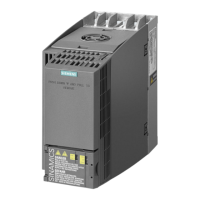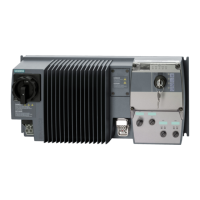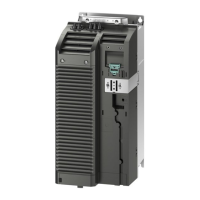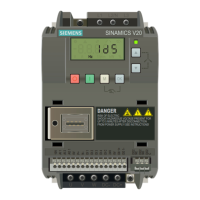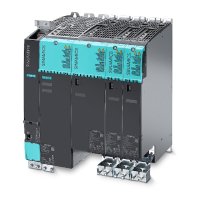32 / 44
Siemens Application Guide «Fire Mode» CM1A5192en_01
Building Technologies Essential Service Mode (in-depth information) 23.10.2007
6.3 Defining the main Speed (Frequency) Set-
point for ESM
The speed/frequency setpoint will generally be defined during Quick Commission-
ing and relates to P1000 in000 only.
PID control is not activated.
6.3.1 ESM and standard setpoint are the same
If the ESM setpoint is going to use the same source of setpoint as is used in stan-
dard mode, then there is no need to change P1000 in000 from what is set during
Quick Commissioning.
If the SED2 in Standard mode is controlled by a 0-10Vdc signal via AIN1 and the
same method of speed control is required when ESM is activated, then:
P1000 in000 = 2 Normal operation and ESM use the same setpoint (AIN1 in
this example)
The choices of Setpoint settings are:
1 = OP Setpoint (UP/DOWN keys on BOP)
2 = Analogue Input via AIN1 (terminals 2-3) 0-10Vdc or 0-20mA
3 = Fixed Frequencies via DIN1~6
4 = Using AOP or Easycomm (with PC connect kit) to replace BOP
5 = RS485 (P1, N2 or USS) via terminals 28-29
6 = Communications Module (LON)
7 = Analogue Input via AIN2 (terminals 2-10) 0-10Vdc or 0-20mA
6.3.2 ESM and standard setpoint are different
If the ESM speed setpoint is different to the standard setpoint, then P1000 in000
needs changing.
P1000 has the capability of defining a Main Setpoint and an Additional Setpoint.
When ESM is being used, the ESM setpoint should be defined as the Main Set-
point and the standard mode should be defined as the Additional Setpoint.
P1000 allows you to combine any two of these inputs, a Main Setpoint and an Ad-
ditional Setpoint.
When the ESM setpoint is different to the standard setpoint, then the ESM setpoint
will always be the Main Setpoint and the standard will be the Additional Set-
point.
ESM setpoint = Fixed Frequency
standard setpoint = AIN1
P1000 in000 = 2 3
ESM set point (main)
“Standard” set point (additional)
Complete range of choices for combined ESM and standard setpoints:
Example
Example
